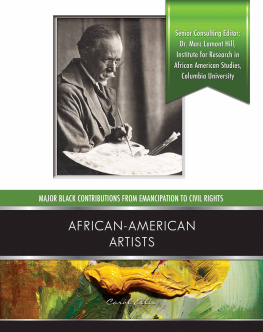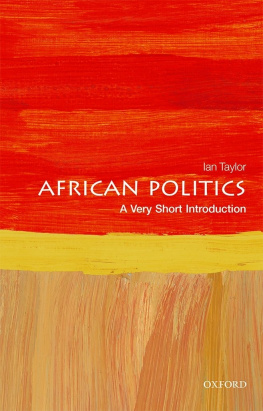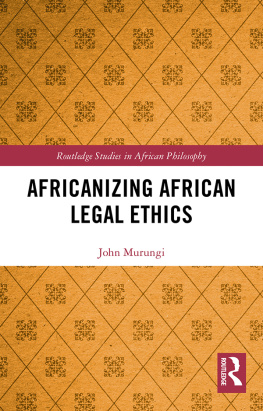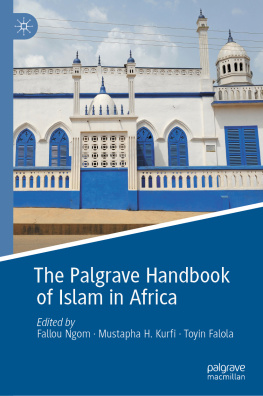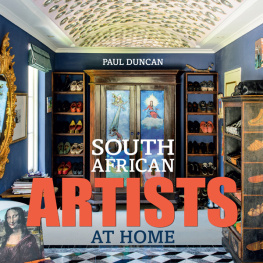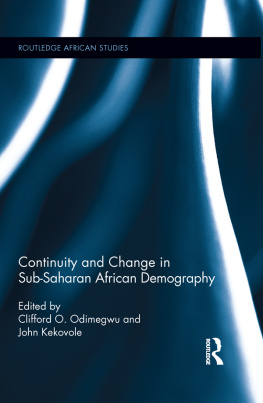Author:
Maurice Delafosse
Layout:
Baseline Co. Ltd
61A-63A Vo Van Tan Street
4 th Floor
District 3, Ho Chi Minh City
Vietnam
Confidential Concepts, worldwide, USA
Parkstone Press International, New York, USA
Image-Bar www.image-bar.com
Acknowledgements to our photographers, particularly Klaus Henning Carl
All rights reserved.
No part of this publication may be reproduced or adapted without the permission of the copyright holder, throughout the world. Unless otherwise specified, copyright on the works reproduced lies with the respective photographers, artists, heirs or estates. Despite intensive research, it has not always been possible to establish copyright ownership. Where this is the case, we would appreciate notification.
ISBN: 978-1-78310-786-5
Maurice Delafosse
AfricanArt


Contents

| Preface |

Well-known and appreciated by Africanists, Maurice Delafosse (1870-1926) knew how to exceed the requirements of his environment and of his time for the benefit of an authentic Africa.
Colonialist administrator from 1894 to 1918, his degrees in naturalism and orientalism allowed him to lead historic, linguistic, and ethnographical research in the field and to restore the cultural values of the black world, just as Lopold Senghor did. A major writer of ngritude, Delafosse exhibited a particular interest for these papers on which he established his first essays.
We chose to publish a selection of the research about the African civilisations which he explains in Les Noirs de lAfrique (1922) and Les Ngres (1927). The writing style is authentic, the analysis from the time, and the vocabulary very frank and true to the time period in which it was written. Nevertheless, let there be no ambiguity: Maurice Delafosse, unquestionably, harboured a deep passion for the African continent and her cultures.

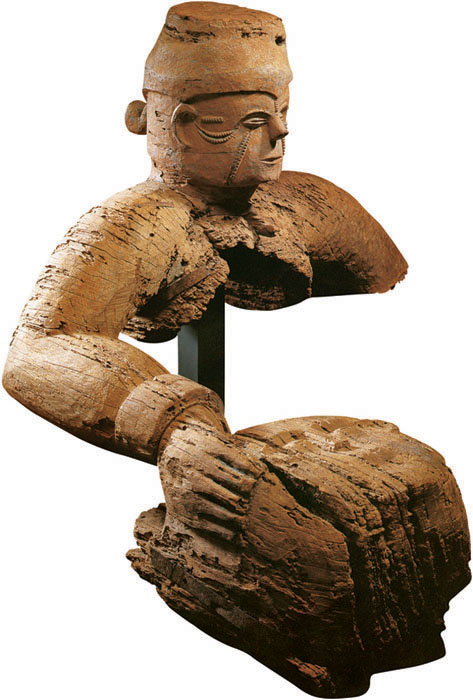
Statue (Kaka).
Wood, height: 100 cm .
In African art, paternal statues are quite rare. The agressive expression displayed on this statue indicates its purpose to protect the child as well as the African people who created it. |

| Origins and Prehistory |
Aim and Object of This Book
The aim of this book is to furnish a general view of the history, the civilisations, and the material, intellectual, and social character of the Negro race which inhabits the African continent.
There will be no question, therefore, of the peoples of the white race who, either in antiquity or since, have played such an important role in the development of North Africa, and whom we find today, more or less mixed and transformed, scattered from the Red Sea to the Atlantic Ocean and from the shores of the Mediterranean to the southern limits of the Sahara: ancient and modern Egyptians, Phoenician, and Punic peoples, Libyans or Berbers, Arabs, and Moors. More precisely, no mention will be made of them except in the measure of their influence on the progress of Negro societies, an influence which has often been considerable and which could not be too emphasised.
For the same reason, there will be no study, except incidentally, of the peoples who, however dark their pigmentation has become as the result of secular and repeated crossing with the Negroes, are nevertheless considered as belonging either to the Semitic branch of the white race, for example, the principal portion of the Abyssinians, or to an Indonesian branch of the yellow race, such as many of the Malagasy tribes. Moreover, the island of Madagascar is outside the geographical limits which I have assigned to myself.
On the other hand, there are African populations which can claim, in part at least, non-Negro ancestry but who are in some way incorporated into the Negro race and into Negro society: such peoples will find a place in this study. I will be content for the moment with citing from among them the Fulani of Sudan, the Hottentots of southern Africa and a certain number of more or less hybrid tribes of East Africa which are commonly called, without much reason, Hamitic or Chamitic.
Origin of the Negro Peoples of Africa
The object of the present work being thus defined, we must now begin by seeking to find out whence came the African Negroes. But is it possible to commit oneself as to their first origin? It seems that the actual state of our knowledge does not permit us, as yet, to answer this question in a definitive or even a satisfactory manner.
Undoubtedly, one would not have even asked the question if Africa were the only part of the world to possess Negroes. But such is not the case and without speaking, of course, of the countries where the advent of the Negro race has taken place only at a recent epoch, as the result of migrations which were generally involuntary and whose genesis and circumstances are known, as in America, we know that the reputed autochthonous inhabitants of lands far removed from Africa and separated from it by the entire width of the Indian Ocean are considered as belonging to the Negro race for the same reasons as are the Negroes of Mozambique and of Guinea.

Edjo statue (Urhobo).
Nigeria. Wood, pigment,
height: 212 cm .
Each Urhobo community has its own protective Edjo statue, which embodies natural spirits or those of the Eshe founding ancestors. The tall Urhobo statues embody Edjo natural spirits or Eshe founding ancestors, who were offered annual celebrations and sacrifices in sanctuaries. Each community has its own protective Edjo , who lives in the wild and can also be materialised by pieces of wood, metal, or clay. These statues carry medicines on their belts and have military attributes. |

Statue (Vezo).
Wood, height: c. 57 cm .
Private collection.
Sakalava rules the region in which the Vezo population resides. These uniquely shaped statues likely played a funerary role, though it is impossible to know whether the strange positioning is the result of time or the artists will. |
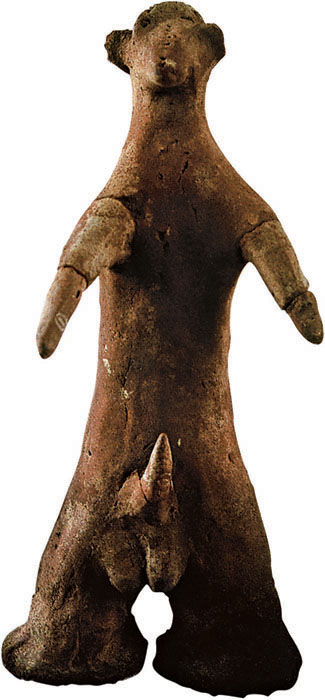
Figurine, 9 th century CE.
Northern Province, South Africa.
Next page


